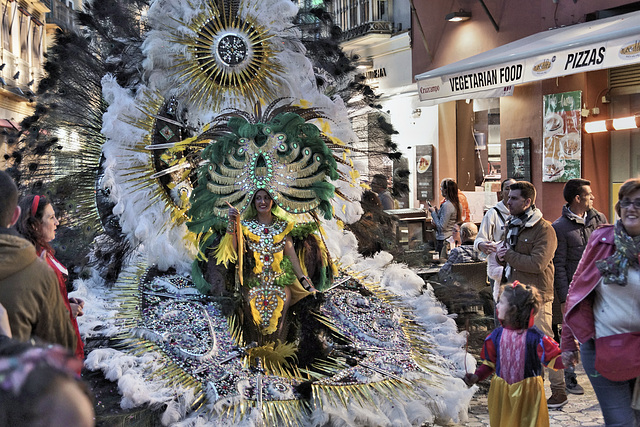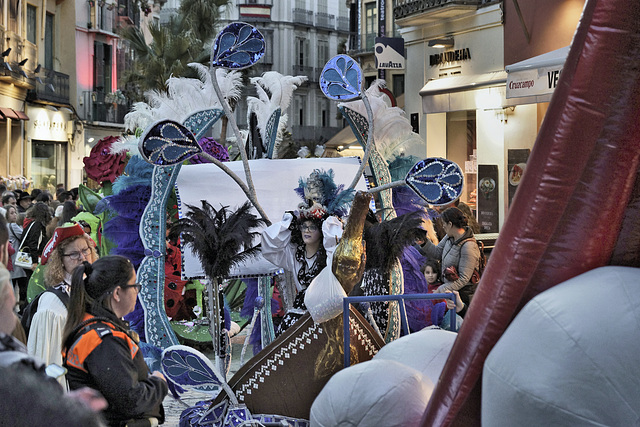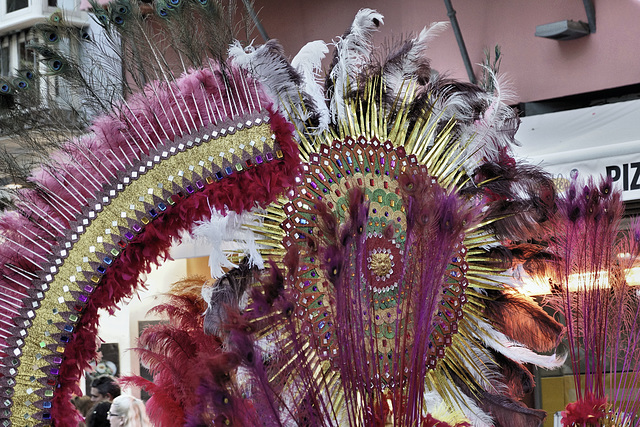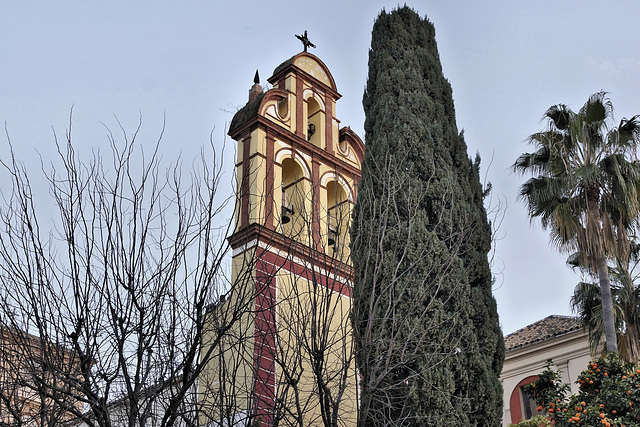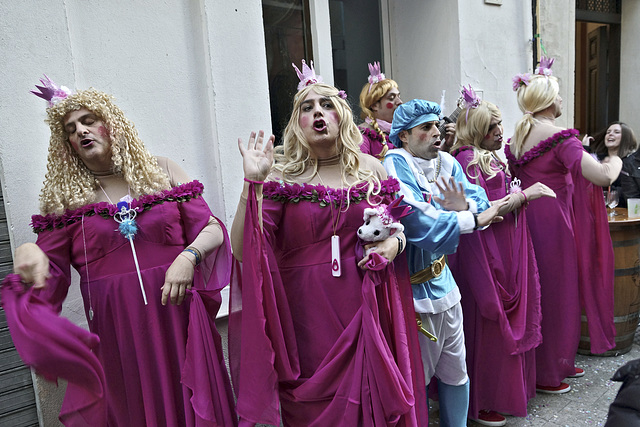Jonathan Cohen's photos
Parade of the Carnival Gods and Goddess, Take #3 – Viewed on Calle José Denis Belgrano, Málaga, Andalucía, Spain
Each year, the Málaga Carnival holds a competition to decide who will be the festival gods. The Momus God and the Carnival Goddess are selected after a parade accompanied by a light, sound and confetti show through Plaza de la Constitución and Calle Larios. The winners will be able to bear their title with pride as carnival god and goddess until the end of the celebration. During month of Carnival, Málaga, its streets, and its theatres are filled with costumes, music, and a lot of magic. Every day of Carnival is filled with special events such as the competitions, parades, and shows that make up this popular celebration.
Parade of the Carnival Gods and Goddess, Take #2 – Viewed on Calle José Denis Belgrano, Málaga, Andalucía, Spain
Each year, the Málaga Carnival holds a competition to decide who will be the festival gods. The Momus God and the Carnival Goddess are selected after a parade accompanied by a light, sound and confetti show through Plaza de la Constitución and Calle Larios. The winners will be able to bear their title with pride as carnival god and goddess until the end of the celebration. During month of Carnival, Málaga, its streets, and its theatres are filled with costumes, music, and a lot of magic. Every day of Carnival is filled with special events such as the competitions, parades, and shows that make up this popular celebration.
Superman – Viewed on Calle José Denis Belgrano, Málaga, Andalucía, Spain
Carnival Feathers – Viewed on Calle José Denis Belgrano, Málaga, Andalucía, Spain
Parade of the Carnival God and Goddesss, Take #1 – Viewed on Calle José Denis Belgrano, Málaga, Andalucía, Spain
Each year, the Málaga Carnival holds a competition to decide who will be the festival gods. The Momus God and the Carnival Goddess are selected after a parade accompanied by a light, sound and confetti show through Plaza de la Constitución and Calle Larios. The winners will be able to bear their title with pride as carnival god and goddess until the end of the celebration. During month of Carnival, Málaga, its streets, and its theatres are filled with costumes, music, and a lot of magic. Every day of Carnival is filled with special events such as the competitions, parades, and shows that make up this popular celebration.
Magnetic Attractions – Calle Duque de la Victoria, Málaga, Andalucía, Spain
The Cathedral, Take #1 – Viewed from Calle San Augustín, Málaga, Andalucía, Spain
The Augustinian Monastery – Viewed from Calle San José, Málaga, Andalucía, Spain
Chirigota, Take #2 – Calle Granada, Málaga, Andalucía, Spain
Chirigota is a genre of Spanish choral folksong originating in the Province of Cádiz. The songs are satirical in nature and are performed predominantly in the streets by costumed performers during the annual two week carnival. It has been described as a vehicle for gossip and public comment, especially of a political or moral, and sometimes prurient, nature. Suppressed during the Francoist State until 1948, along with carnival in general, there has been a massive resurgence of the art-form since his death and the re-establishment of democracy. Politicians are often the objects and subjects of the songs. In 2012 an entire repertoire of the chirigota group "Los Gordillos" was devoted to the communist/anarchist mayor of Marinaleda, a utopian village in central Andalucía. The twelve members were dressed as the mayor, Juan Manuel Sanchez Gordillo, and offered songs about supermarket raids led by him that summer to dramatize the increasing poverty in the countryside.
Jump to top
- ipernity © 2007-2025
- Help & Contact
|
Club news
|
About ipernity
|
History |
ipernity Club & Prices |
Guide of good conduct
Donate | Group guidelines | Privacy policy | Terms of use | Statutes | In memoria -
Facebook
Twitter

